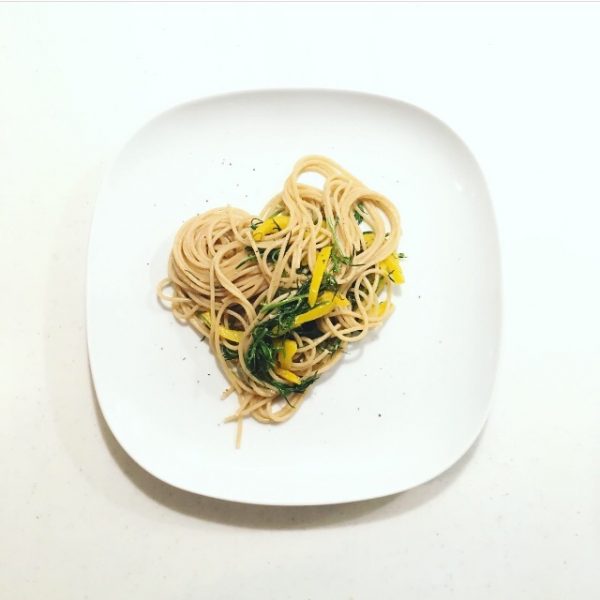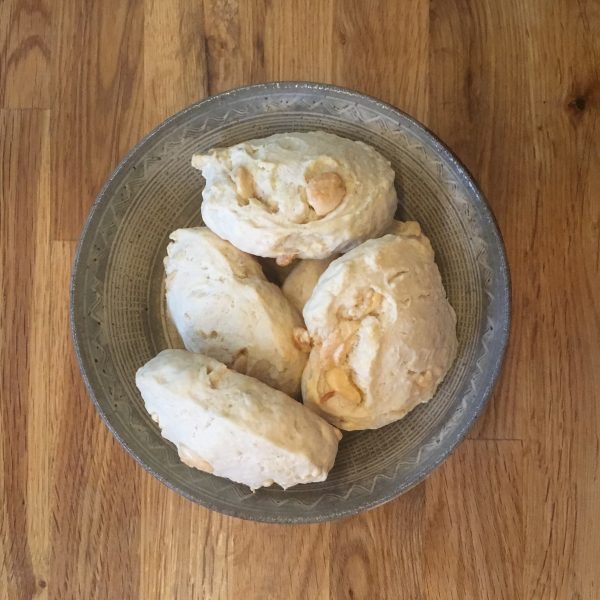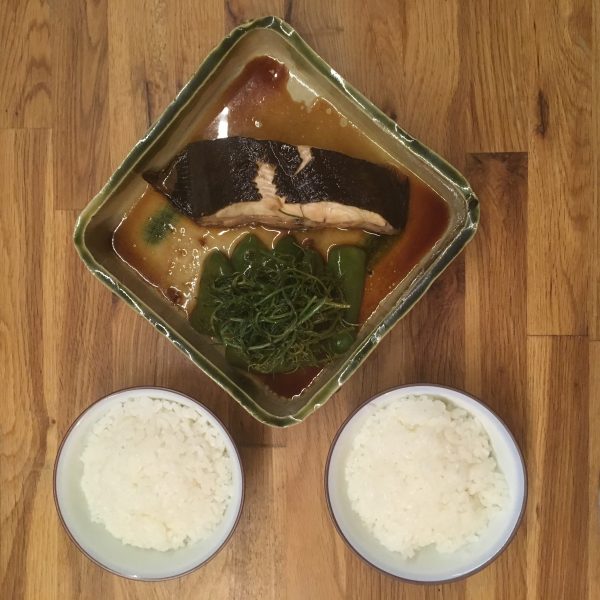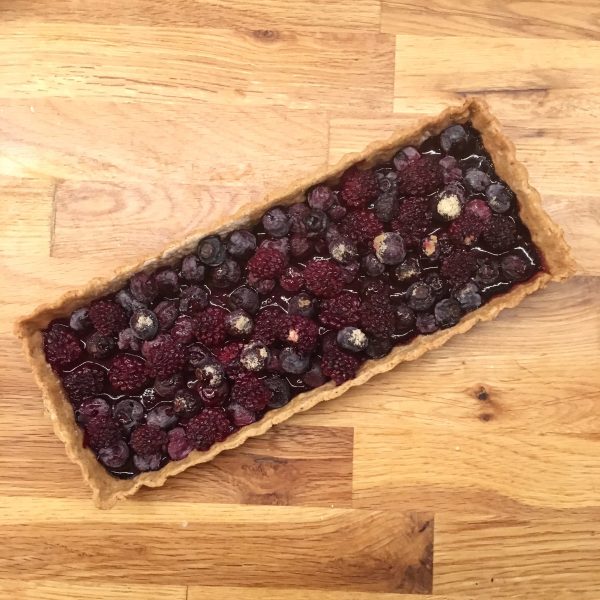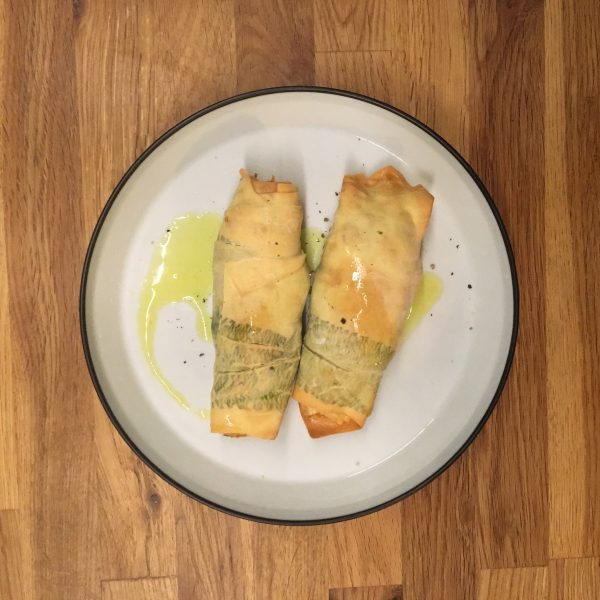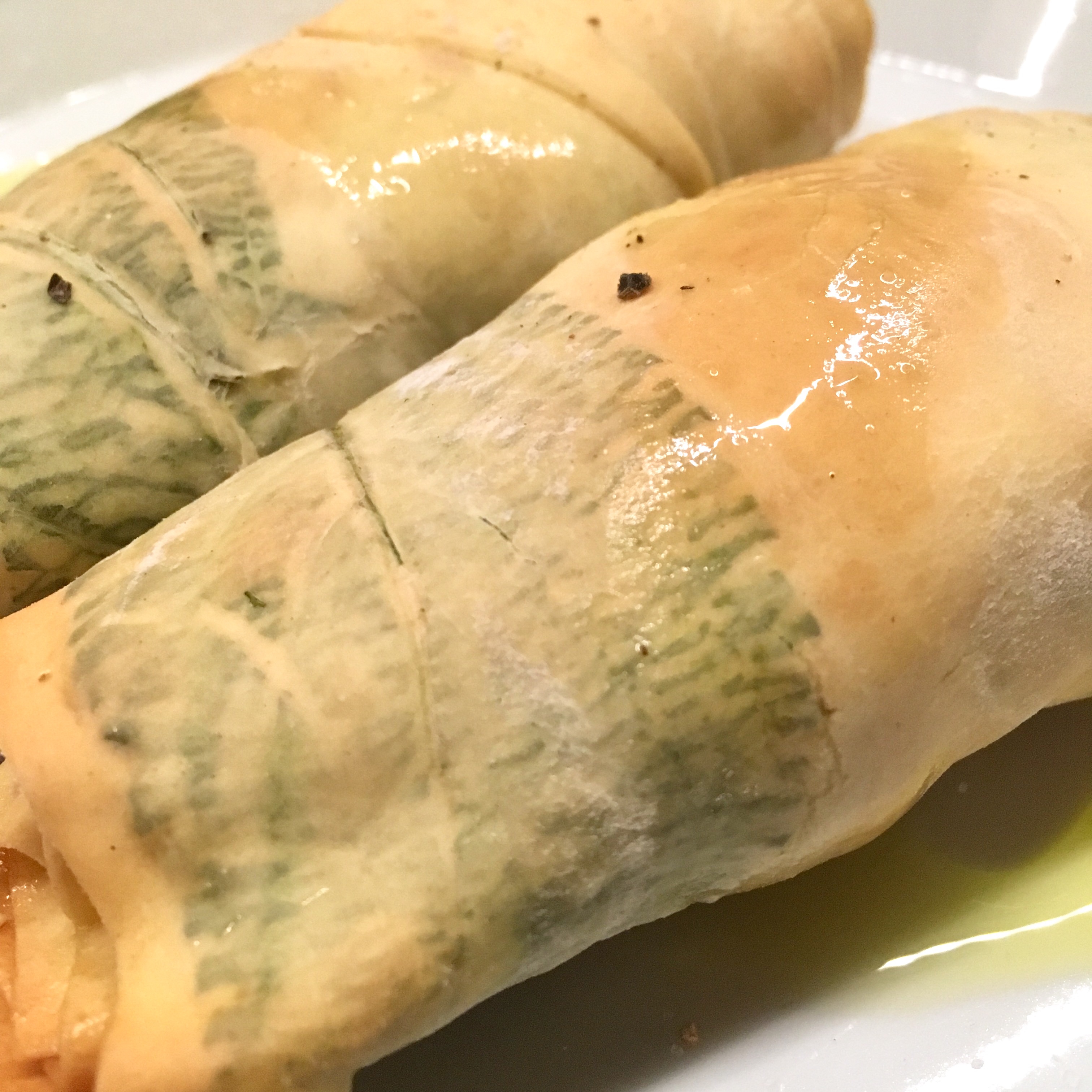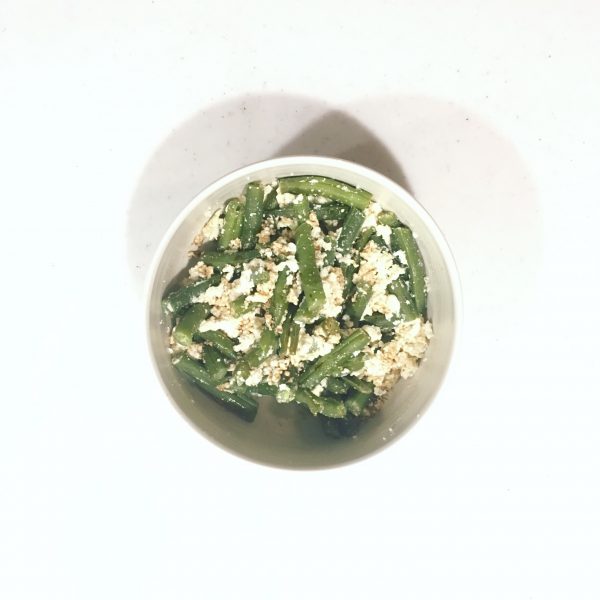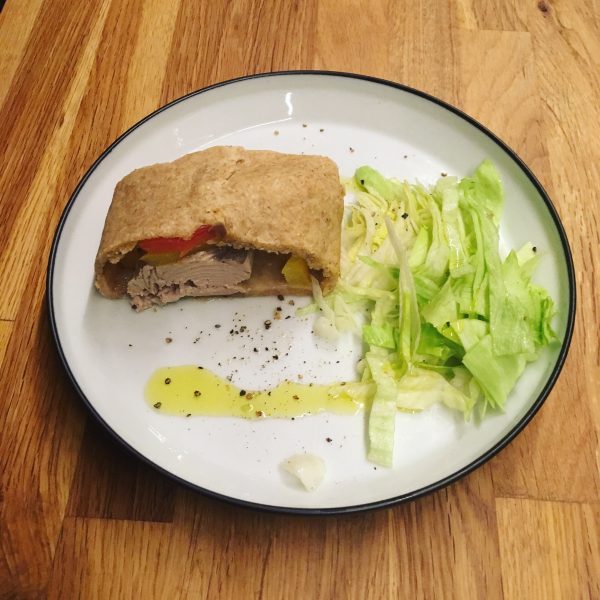This little herb okahijiki オカヒジキthat I discovered only 2 years ago is definitely one of my summer favorite. I was surprised to see on IG that it is also an Italian classic, though salsola is much of a spring herb there than in Japan where it rather a summer plant. Anyway, one more way to link my love for both Italian and Japanese cooking in one recipe! Though this one is definitely on the western side! Salsola have a very distinctive texture and bring to dishes a beautiful English green color. Yet the flavor is extremely subtle. So I decided to mix them with another vegetable that has a distinctive flavor but less texture, and that would bring in some new color, while keeping the tone. I used yellow bell pepper. But to be sure that they won’t overrule the salsola I cut them quite thinly. The result, with or without parmigiano was really delicious. So here is my recipe.
Salsola and bell pepper pasta
– 1 yellow bell pepper
– 1 large handful of salsola
– 125g of whole wheat spaghetti
– olive oil
– salt and pepper
Boil the pasta. In the meantime wash the vegetables. Cut thinly the bell pepper, cut in 5cm long pieces the salsola. In a pan with olive oil heated low, add the bell pepper, and stir once in a while until they soften. Add the salsola and stir once in a while too for about 5min. Add the cooked pasta, stir. Add salt and pepper, and serve. You can top with grated parmegiano or not…
